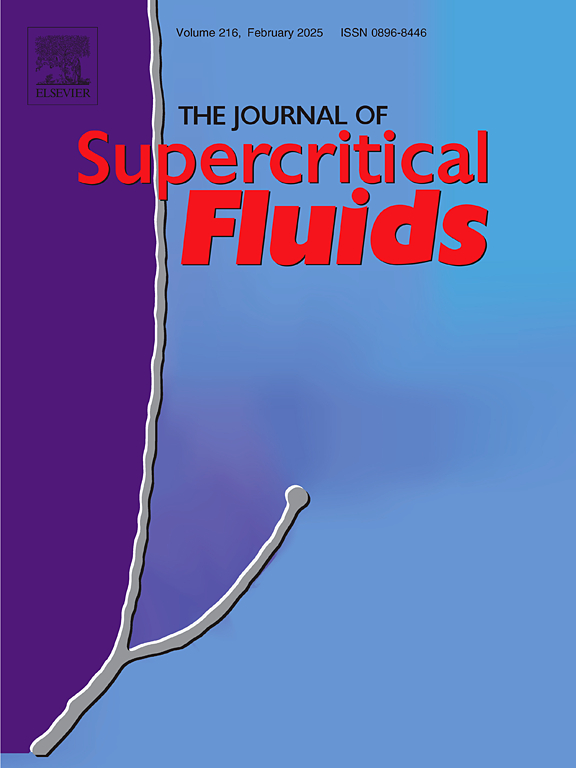亚临界水萃取菜籽粕水解蛋白:回收率及理化性质优化
IF 3.4
3区 工程技术
Q2 CHEMISTRY, PHYSICAL
引用次数: 0
摘要
本研究的目的是通过调整亚临界水萃取(SCW)条件来提高热压脱溶烤菜籽粕的蛋白质回收率,同时优化其理化性质。采用响应面法进行3 × 3面心中心复合设计,了解4.03 MPa压力下提取温度(200-250°C)、时间(20-30 min)和料浆浓度(5-20 %)之间的交互作用及其对蛋白质回收率、水解度(DH)、界面张力(IFT)和总酚含量(TPC)的影响。该提取物的最大蛋白质回收率为68.9 wt%,最大DH为14.1 %。提取的蛋白显著降低IFT至4.0 mN/m。该提取物具有较高的TPC值(24.6 mg/g)和良好的抗氧化性能。总的来说,这表明SCW有潜力将低价值的菜籽粕转化为高价值的蛋白质水解物,具有增强的表面活性和抗氧化特性,可用于食品和工业应用。本文章由计算机程序翻译,如有差异,请以英文原文为准。
Subcritical water extraction of hydrolyzed proteins from canola meal: Optimization of recovery and physicochemical properties
The objective of this study was to valorize hot-pressed, desolventized toasted canola meal by tailoring subcritical water extraction (SCW) conditions to enhance protein recovery while optimizing their physicochemical properties. A 3 × 3 face-centered central composite design using response surface methodology was applied to understand the interaction between extraction temperature (200–250°C), time (20–30 min), and feed concentration (5–20 %) at 4.03 MPa pressure and their effects on protein recovery, degree of hydrolysis (DH), interfacial tension (IFT), and total phenolic content (TPC). The extracts displayed a maximum protein recovery of 68.9 wt% with a maximum DH of 14.1 %. The extracted protein significantly reduced the IFT to a minimum of 4.0 mN/m. The extracts showed a high value of TPC (24.6 mg/g) and excellent antioxidative properties. Overall, it demonstrates the potential of SCW to transform low-value canola meals into high-value protein hydrolysates with enhanced surface activity and antioxidative properties for food and industrial applications.
求助全文
通过发布文献求助,成功后即可免费获取论文全文。
去求助
来源期刊

Journal of Supercritical Fluids
工程技术-工程:化工
CiteScore
7.60
自引率
10.30%
发文量
236
审稿时长
56 days
期刊介绍:
The Journal of Supercritical Fluids is an international journal devoted to the fundamental and applied aspects of supercritical fluids and processes. Its aim is to provide a focused platform for academic and industrial researchers to report their findings and to have ready access to the advances in this rapidly growing field. Its coverage is multidisciplinary and includes both basic and applied topics.
Thermodynamics and phase equilibria, reaction kinetics and rate processes, thermal and transport properties, and all topics related to processing such as separations (extraction, fractionation, purification, chromatography) nucleation and impregnation are within the scope. Accounts of specific engineering applications such as those encountered in food, fuel, natural products, minerals, pharmaceuticals and polymer industries are included. Topics related to high pressure equipment design, analytical techniques, sensors, and process control methodologies are also within the scope of the journal.
 求助内容:
求助内容: 应助结果提醒方式:
应助结果提醒方式:


